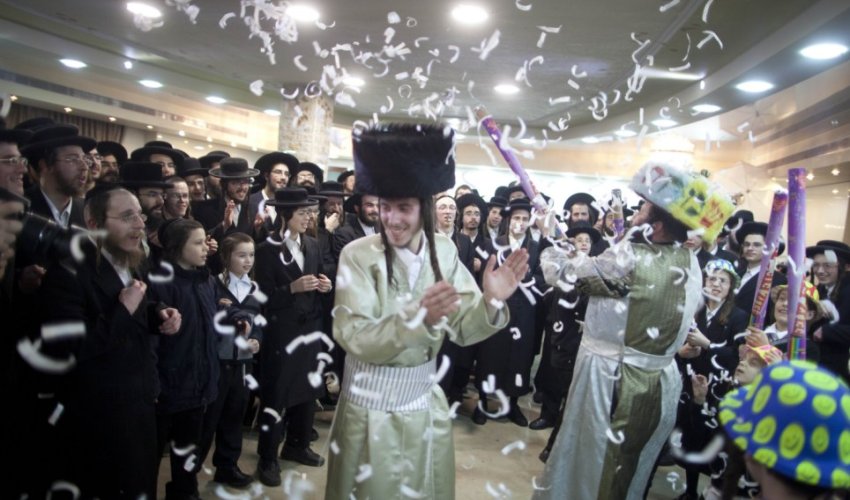Ultra-orthodox Jewish wedding in Jerusalem - PHOTO

Jewish bride Rebecca Hanna and her groom Aharon Cruise’s wedding in the in Jerusalem follows the strict rules of the Haredi community.This wedding took place on Tuesday in the area of Mea Shearim, which means 100 gates, is one of the oldest Jewish neighbourhoods in Jerusalem, established in 1874, and has an overwhelmingly Haredi (ultra-orthodox Jewish) population.Traditional Jewish weddings consist of two separate parts, the betrothal ceremony, known as erusin or kiddushin, and the actual wedding ceremony, known as nisuin. The first betrothal ceremony sees the groom give a wedding ring to the bride. During this part of the service, the bride is prohibited from talking to all other men.After the ceremony the bride and groom spend an hour together before the bride enters the chuppah and, after gaining her permission, the groom joins her. The couple are then blessed over a cup of wine at the conclusion of the ceremony.All the male guests dressed in black and wore traditional shtreimel hats for the occasion, which traditionally separates the men from the women.The women are forced to watch the ceremony peeking through a white lace curtain as Haredi Judaism traditions dictate that men and women are kept separate, some communities even arguing that married men and women should not be seen together in public at all.The bride and members of the family then take part in Mitzvah tantz ritual - where members of the family and honoured rabbis dance in front of her and then with the groom.The bride stands perfectly still, holding one end of a long sash while rabbis, the groom’s father, her own father or her grandfather holds the other end and dances with her.When the ceremony is over, Rebecca returns behind the lace curtain to join the women for their celebrations, while Aharon parties on with his male friends and relatives. The group can be seen dancing and drinking, with even young children smoking cigarettes.Hasidic Jews wear clothes similar to that worn by their ancestors in 18th and 19th century Europe - and this style of attire also helps them to focus on their sense of tradition and spirituality.The biggest Hasidic communities are found in Israel and the U.S. There also smaller groups in Canada, England, Belgium and Australia. Their lives revolve around religious study, prayer and family - and theirs is a world without television, films, the internet or secular publications.The men generally have beards and sidelocks (peyot) while women tend to wear long skirts and shirts with long sleeves and high necklines as they adhere to strict guidelines of modesty. After the women get married, they cover their heads with either scarves, hats or wigs (known as 'sheitels').(dailymail.co.uk)ANN.Az
Latest news 
More news 



































 Photo
Photo 



 Video
Video 

